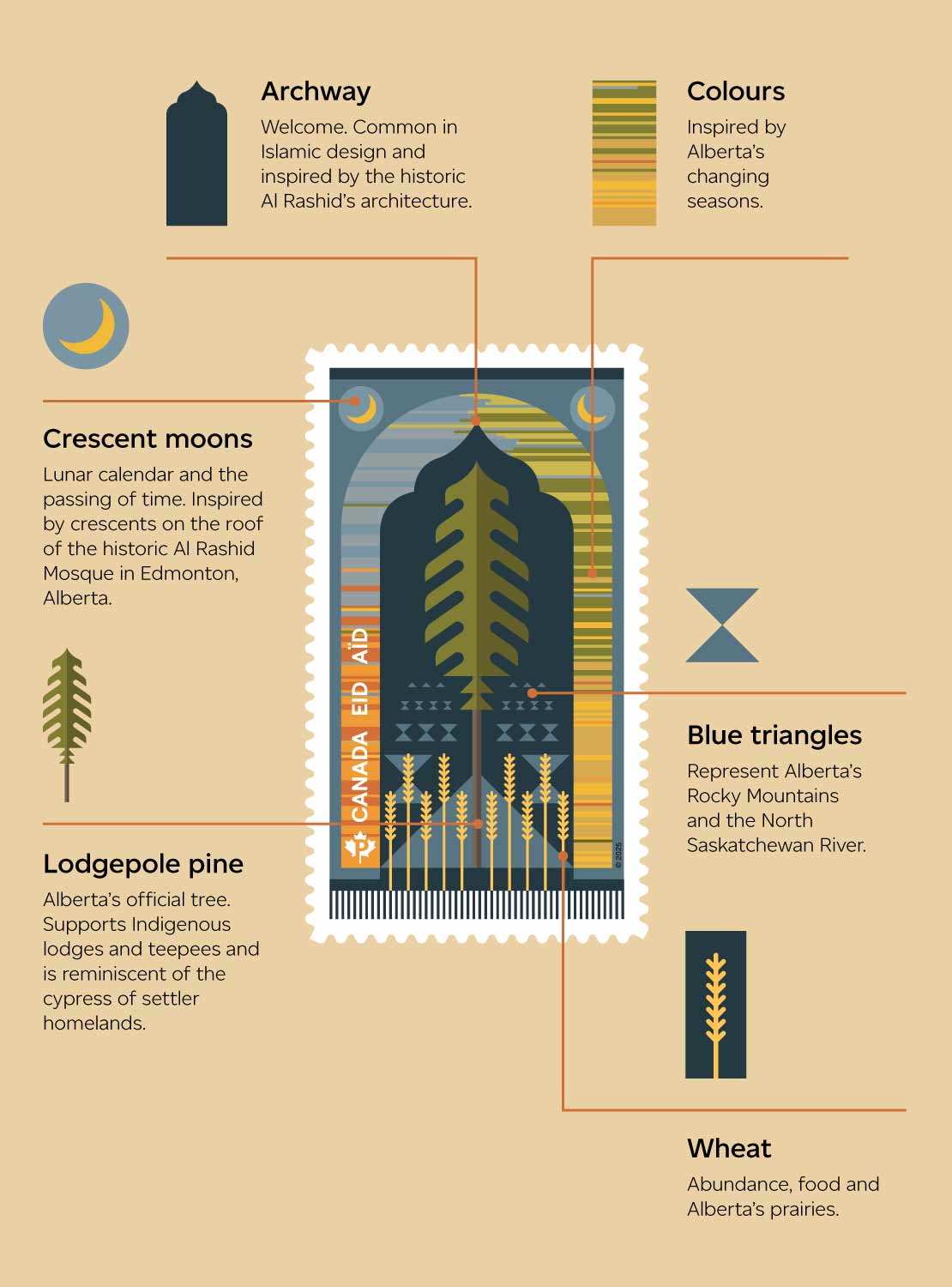Prayer is a pillar of Muslim faith. It’s also an integral part of Eid al-Fitr and Eid al-Adha, two of the most important religious holidays celebrated by Muslims in Canada and around the world.
Prayer rugs hold deep relevance for Muslims. Traditionally made of wool, cotton, or intricately woven silk, prayer rugs often reflect regional diversity while helping focus and beautify the act of prayer.
This year’s Eid stamp features a prayer rug celebrating the connection between Indigenous and Muslim peoples – and the multi-faith collaboration that built Canada’s first mosque.
The Canadian Prayer Rug was created in 2016 as a project of The Green Room, a youth program run by the Edmonton-based charity now called IslamicFamily, which provides spiritually and culturally sensitive services to the local community.
The rug was designed by local Métis artist Kit Craven and Muslim weaver Noor Iqbal, based on research and interviews carried out by youth with Indigenous Elders and descendants of early Muslim settlers.
The rug’s design depicts Alberta’s diverse landscapes and distinct seasons. At its centre are an archway and a lodgepole pine – a tree that supports teepees and lodges and is reminiscent of the cypress of settler homelands in the Middle East.
Together with locally sourced wool, dyes and other materials, the prayer rug reflects the rich cultural and geographical history of the region, weaving together elements that honor the community’s heritage.
More than a work of art, the rug symbolizes unity and multiculturalism within Treaty 6 Territory, which includes Edmonton. It embodies the collective identity and creativity of its people, while also celebrating the deep, enduring connection between Indigenous and Muslim communities. This relationship, rooted in mutual respect and collaboration, helped shape Canada’s history —including through the construction of the country’s first mosque in Edmonton and its subsequent dedication in 1938.

“I hope the stamp makes people think about the history of the Muslim community in Canada, the place of art and dialogue in reconciliation, and what their own version of a prayer rug might look like,” says IslamicFamily executive director Omar Yaqub.
“Culture is more about doing than telling. This is art you can interact with.”
This year’s Eid issue is Canada Post’s seventh stamp commemorating both Eid al-Fitr and Eid al-Adha. Celebrated by Muslims across Canada, these two holidays feature communal prayers, festive meals, family gatherings, gift-giving, and acts of charity.
The Eid stamp is one of several Canada Post issues each year to mark annual celebrations important to Canada’s culturally diverse population – others include Diwali, Hanukkah, and Christmas.
Eid al-Fitr, or the Festival of Breaking the Fast, marks the end of Ramadan. This year, Eid al-Fitr takes place at the end of March. Eid al-Adha, or the Festival of Sacrifice, marks the end of the Hajj pilgrimage to the Kaaba in Mecca, Saudi Arabia. In 2025, Eid al-Adha begins in June.
As Canada Post continues to celebrate cultural and religious diversity through its stamp program, this year’s Eid issue serves as a reminder of the shared histories, traditions and artistic legacies that help shape Canada’s identity.
Eid stamp features prayer rug celebrating ties between Indigenous, Muslim peoples
Available now